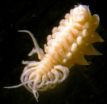(Press-News.org) In a study published online this month in the Journal of Heredity, NOAA researchers and others, using DNA testing to fill in a missing link in the lives of killer whales that seasonally visit Washington's Puget Sound, have discovered that some of the progeny they studied were the result of matings within the same social subgroups, or pods, that are part of the overall population.
One implication of this inbreeding behavior is a significant reduction in the genetic diversity of what is already a perilously small population of animals, formally known as Southern Resident killer whales. That population numbers only about 85 animals and was listed as endangered under the federal Endangered Species Act in 2005.
Southern resident killer whales, which also visit the waters of British Columbia and are occasionally found as far south as Monterey Bay, Calif., consist of three pods called J, K and L pod. Inter-pod mating has never been detected in studies of Northern Resident killer whales, which range from Washington to southern Alaska, and until now researchers assumed that Southern Residents exhibited similar mating patterns. The two populations are distinct and do not socialize with each other.
The study, titled "Inferred paternity and male reproductive success in a killer whale (Orcinus orca) population," involved researchers from NOAA's Fisheries Service, the University of Washington, Cascadia Research Collective and the Center for Whale Research.
"We were surprised that, in many cases, the father was from the same pod as the mother. Based on earlier studies, we didn't think killer whales mated within their own pod," said Dr. Michael Ford, lead author of the study and a scientist with NOAA's Northwest Fisheries Science Center in Seattle.
"This behavior may be unique to the Southern Resident population, perhaps related to the population's small size," Ford added.
The researchers analyzed 78 individuals for 26 different genetic markers, or DNA fingerprints, and inferred the paternity for 15 mother-calf pairs. The study found no evidence that Southern Residents mate outside their population, but clear evidence that they do sometimes mate with members of their own pod.
"Even though some of the fathers were in the same pod as the mothers, none of them were really closely related to each other. Our results suggest that Southern Residents avoid mating with their siblings or parents, but we aren't really sure of the social process that results in this avoidance," Ford said.
Compared to many mammalian species, males within the Southern Resident community were also found to have a relatively low variance of reproductive success, meaning several males are responsible for offspring production in the population rather than just one or two. This contrasts with some other marine mammals like elephant seals, where a handful of males completely dominate the breeding and may reflect the difficulty male killer whales have in controlling other males' access to females.
However, the study also revealed that the older and larger males appeared to be responsible for most of the successful matings, indicating that females may choose to mate only with older males, or possibly that older males may prevent the younger males from breeding successfully.
Ford said he and his colleagues are particularly worried about the group's lack of genetic diversity, which he characterized as a "bottleneck." "Since this population remains isolated from other killer whale populations, mating within pods puts Southern Residents at risk of genetically deteriorating further from a potential increase in inbreeding or harmful mutations," he said.
INFORMATION:
Read the journal article at: http://jhered.oxfordjournals.org/content/early/2011/07/12/jhered.esr067.full.pdf+html
NOAA's mission is to understand and predict changes in the Earth's environment, from the depths of the ocean to the surface of the sun, and to conserve and manage our coastal and marine resources. Find us on Facebook.
END
Chicago, IL—Infection control researchers investigating a rare bacterial outbreak of Burholderia cepacia complex (Bcc) identified contaminated nasal spray as the root cause of the infections, leading to a national recall of the product. An article in the August issue of Infection Control and Hospital Epidemiology, the journal of the Society for Healthcare Epidemiology of America (SHEA), describes how researchers were able to trace the outbreak back to the nasal decongestant spray.
Bcc is a group of Gram-negative bacteria that can cause hard-to-treat infections. Patients ...
Chicago, IL (July 21, 2011)—A study in the August issue of Infection Control and Hospital Epidemiology, the journal of the Society for Healthcare Epidemiology of America (SHEA), suggests that documentation of hepatitis B vaccination for health care students may fall short of current recommendations.
Researchers led by Dr. Rania Tohme of the Centers for Disease Control and Prevention (CDC) analyzed hepatitis B immunization records of 4,075 health care students who matriculated at a university in the southeastern U.S. between January 2000 and January 2010. The study found ...
Roughly 1 in 4 lesbian or gay teens and 15 percent of bisexual teens are homeless, versus 3 percent of exclusively heterosexual teens, finds a Children's Hospital Boston study of more than 6,300 Massachusetts public high school students. Moreover, among teens who were homeless, those who were gay, lesbian or bisexual (GLB) were consistently more likely than heterosexuals to be on their own, unaccompanied by a parent or guardian.
The study, published online July 21 by the American Journal of Public Health, is the first to quantify the risk of homelessness among teens ...
A fungus that lives at extremely high temperatures could help understand structures within our own cells. Scientists at the European Molecular Biology Laboratory (EMBL) and Heidelberg University, both in Heidelberg, Germany, were the first to sequence and analyse the genome of a heat-loving fungus, and used that information to determine the long sought 3-dimensional structure of the inner ring of the nuclear pore. The study was published today in Cell.
The fungus Chaetomium thermophilum lives in soil, dung and compost heaps, at temperatures up to 60oC. This means its ...
Building a battery-powered land speed vehicle capable of achieving a speed of 400+ miles per hour requires innovative components, corporate partnerships, hours of diligent preparation and a powerful supercomputer.
A team of engineering students at The Ohio State University's (OSU) Center for Automotive Research (CAR) recently began running aerodynamics simulations at the Ohio Supercomputer Center (OSC), one of the first steps in the long and careful process of researching, designing, building and racing the fourth iteration of their record-breaking, alternative-fuel streamliner. ...
On July 10, The Denver Post published two side-by-side op-ed pieces on hydraulic fracturing. One by Dave McCurdy, president and CEO of the American Gas Association, argued that the natural gas extraction process has led to an energy revolution in the U.S., one that reduces the nation's dependence on foreign energy, creates domestic jobs and safely helps the nation meet its diverse and growing energy needs while reducing its carbon footprint.
The second piece by Sam Schabacker, a senior organizer for the consumer advocacy organization, Food & Water Watch, paints a different ...
(Santa Barbara, Calif.) –– Scientists at UC Santa Barbara and other institutions say their new research is expected to profoundly affect the field of ecology and can assist the management of ecosystems, including forests, lakes, and oceans. And it's all because of parasites.
The research, published this week in the journal Science, includes parasites in a comprehensive study of ecosystems. By doing so, the scientists say they have revealed new ecological rules.
"The major finding of our research is that all types of animals –– parasites or otherwise –– appear to follow ...
Operations research models developed by a team at the Georgia Institute of Technology helped CARE International pick three locations worldwide to supply relief quickly to victims of earthquakes, floods, and other natural disasters, according to a paper in a journal of the Institute for Operations Research and the Management Sciences (INFORMS®).
"Pre-Positioning of Emergency Items for CARE International" is by Serhan Duran, currently at the Middle East Technical University in Ankara Turkey, and by Marco A. Gutierrez and Pinar Keskinocak of the H. Milton Stewart School ...
COLUMBIA, Mo. ¬— While some members of Congress and others are trying to repeal the healthcare reform law that was passed in 2010, known as the "Patient Protection and Affordable Care Act," medical providers have begun to implement requirements as the law slowly phases in over the next several years. For reform to be successful, one University of Missouri public health expert has determined that professional associations for psychologists and other medical providers need to be at the forefront of the planning stages, and that everyone, including providers and patients, ...
In the wake of the devastating Japanese tsunami, the 2010 Haitian earthquake, and the recent threat of pandemic flu, a new issue of the journal Interfaces: The INFORMS Journal on the Practice of Operations Research is dedicated to improving responses to disasters, health crises, and acute public issues, according to the Institute for Operations Research and the Management Sciences (INFORMS®).
The Interfaces special issue on Humanitarian Logistics: Doing Good with Good O.R. is edited by Ozlem Ergun, Pinar Keskinocak, and Julie Swann, the directors of the Georgia Tech ...

